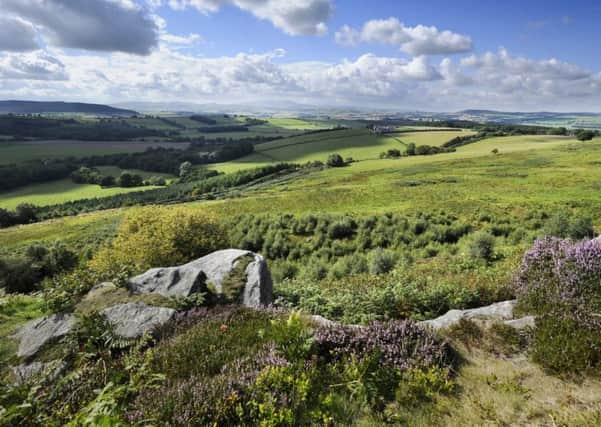Alnwick, History Society


The sites Ian chose were often very isolated, but accessible.
Starting with the prehistoric, Ian went first to Corby Crags, where Bronze Age pottery was found in a rock shelter, and flints from the Neolithic. Nearby there was a hillfort.
Advertisement
Hide AdAdvertisement
Hide AdThen it was on to Blawearie, a Bronze Age burial mound, and to Duddo Stone Circle, also known as Four Stones, although there are actually five.
Finally, he went to three Iron Age hillforts, two at Old Bewick, adjacent to a Second World War pillbox, and another at High Knowes, where the line of the two palisades can still be followed.
From the Roman era, there is a good stretch of road west of Holystone. By the side, near Rochester, the remains of a Roman tomb can still be seen.
The Old School House was built with stone from Bremenium (High Rochester). A piece of projectile from a Roman catapult is incorporated in this attractive cottage.
Advertisement
Hide AdAdvertisement
Hide AdThere are many castles in Northumberland. Ian’s favourite is Harbottle, originally a motte and bailey castle, built by the Umfraville family. A path from the road goes to the Drake Stone, from where a fine view of the castle can be seen.
Henry VIII’s sister, Margaret, lived at the castle. Her grandson was Lord Darnley, who married Mary Queen of Scots. Their son was destined to become James VI of Scotland, and James I of England.
There were many other “oddities”: the remains of the White Cross, near the road running from Alnwick to Denwick, which may have marked a plague pit; a relief of the Adoration of the Magi in Kirknewton church, all dressed in kilts; the cross slab in Hartburn church decorated with the cross of the Knight’s Templar, as well as a Maltese Cross; and a grotto in Hartburn Glebe, built by Dr Sharpe in the 18th century for his daughters to change in when they went bathing.
Even more remote were the remains of an illicit whiskey still on the slopes in the Coquet Valley. Many illegal stills were set up just south of the Scottish Border to avoid tax.
Advertisement
Hide AdAdvertisement
Hide AdThen there are the Cheviot goats, probably descendent of Neolithic goats, near Alnham. Ian then walked to look at the memorial to Eleanor Heron. She died in 1853 in bad weather when returning, against advice, from looking after a sick shepherd.
Near Bellingham, on Padon Hill, is a monument to Alexander Peden, a 17th century Scottish covenanter. It stands 5m-high and is shaped like a beehive.
Ian also talked of two bridges – Telford’s Bridge in Morpeth and Robert Stephenson’s Border Bridge in Berwick. In their day it was Humphrey Davy and Brunel who were fêted, but today’s remains are mostly the work of Telford and Stephenson.
Then we arrived in the 20th century with Humshaugh, the site of the first proper Scout Camp in 1908 (Brownsea Island was a ‘test’ site); a benchmark near Belford; the airfield at Ashington – completely disappeared; First World War training trenches near Rothbury; and potholes in Percy Street.
Advertisement
Hide AdAdvertisement
Hide AdLooking at old photographs, the potholes were revealed to be where girders had been placed in the road in the Second World War.
A pillbox at Otterburn was actually a radar station. Nearby is an old gibbet.
Altogether, it was a fascinating trip around the county, with quite a few places new to most members.
The next meeting is on February 27, at 7.30pm, at Bailiffgate Museum. Doors open at 7pm. Phil Huntley will talk about Hughes Bolckow, Shipbreakers From Blyth, 1905-1980.